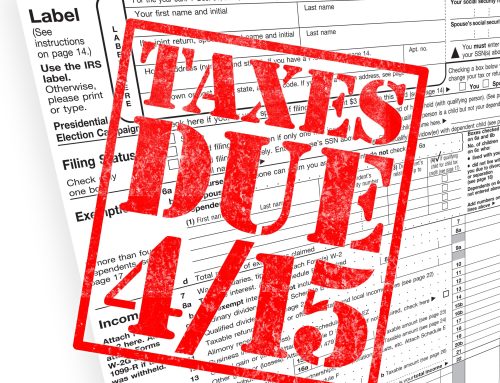Article Highlights:
- Qualifications
- Employee Issues
- Method Options
- Income Limitations
- Relocation
“Home office” is a term used to describe the tax deduction for the business use of your home, which may or may not be an office. If you’re thinking of creating a home office in Australia, take a look at hollowaystorage.com.au and how they can help you make some room.
It is often misunderstood and claimed by those who don’t qualify for it or not claimed to the taxpayer’s best advantage. Understanding the requirements, options, limitations, advantages and disadvantages will help you determine if you qualify for the deduction and whether it is right for you.
Qualifications – In general, for you to deduct home office expenses, the office area must be used exclusively (no personal use) in your trade or business on a regular, continuing basis, and one of the following must apply-it is:
- Used for storing inventory for a wholesale or retail business for which your home is the only fixed location. Use of the area need not be exclusive under this test, but it must be regularly used;
- Used as a licensed day care center (exclusive use not required);
- A separate structure not attached to your home but used for business;
- A place where you meet with customers, patients or clients (just telephone contact with clients isn’t enough to meet this test); or
- The principal place of business for any of your trades or businesses.
Employee Issues – If you are an employee, in addition to the general qualifications for a home office discussed above, the home office use must also be for the convenience of your employer. Convenience of the employer means a business necessity-the use of the home must be a condition of employment. Decorating this office space with furniture that can help to provide the employee and their employer with the necessary means to work could be vital to their productivity. To store all of your important files and documents, you may want to think about getting a filing cabinet, as every desk needs a filing cabinet, along with a comfortable chair and desk. This should help the employee to meet the conditions of employment for an office in the home. The employee needs a place to work, but the employer doesn’t provide one (or the office provided by the employer is inadequate or unsafe). Usage by the employee for personal convenience is not enough.
Method Options – Two methods are available for determining the amount of the home office deduction: the actual expense method and the simplified method (sometimes termed the safe-harbor method).
- Actual Expense Method – The actual expense method uses home expenses that are prorated based upon the portion of the home that qualifies as a home office, generally based upon square footage. The prorated expenses include mortgage interest, real property taxes, insurance, heating, electricity, maintenance and depreciation. In the case of a rented home, the interest, tax and depreciation expenses are replaced by rent. Besides the prorated expenses, 100% of the costs directly related to the office, such as painting the office or repairs specific to the office, are allowed. You’d also be responsible for printer related costs as well, I hear that you can get a great deal from this website if you were interested in keeping those costs down.
- Simplified Method – In lieu of the actual expense method, the simplified method can be elected annually. The deduction is $5 per square foot, with a maximum square footage of 300. Thus, the maximum deduction is $1,500 per year. If the space was not used the entire year as a qualified home office, then this simple method becomes a little more complex, as the deduction must be limited to $5 times the average monthly square footage. Under the actual expense method, since part of the home mortgage interest and taxes are deducted as home office expenses, only the difference between 100% of the mortgage interest and taxes and the amount claimed for the office expense is allowed as a Schedule A itemized deduction. With the simplified method, all of the qualified home mortgage interest and taxes can be deducted on Schedule A.
When using the actual method, the unused deduction as a result of the income limitations (discussed below) carries over to future years, but none of the unused deduction figured by the simplified method will carry over.
Income Limitations – Even if you qualify for a home office deduction, the home office deduction is limited to the business activity’s gross income or, in the case of an employee, wages from the employer. Many people mistakenly believe that the limitation is the activity’s net income. The gross income limitation is actually the gross sales less the cost of goods sold, the business portion of the home’s mortgage interest and taxes and the otherwise deductible business expenses that are not related to the home’s business use. If the simplified home office deduction is used, there is no adjustment for home mortgage interest and taxes.
Relocation – There are additional things to consider when you deduct a home office and subsequently leave the rental or sell the home.
- Renter – When you rent your home, move and use space at the new location as a home office, for the year of the move, you’ll need to figure the deduction separately for each home office based on the specific expenses and business use area of each home. If you don’t use space at your new living quarters for business purposes, then your home office deduction for the year of the move will only need to factor in the expenses for the time you lived in the first home.
- Homeowner – If you own the home, sell it and had lived in it for 2 of the 5 years prior to the sale date, you can exclude up to $250,000 of gain ($500,000 for a married couple). However, you cannot exclude the part of any gain to the extent of depreciation you claimed for the home office after May 6, 1997.
In addition, if the home office was within the same structure as the home, the exclusion will apply to the entire gain from the home except for the deprecation claimed. On the other hand, if the office was within a separate structure, then the sale must be treated as two sales – one for the home and one for the office – and the gain from the home office portion cannot be excluded, which can be a huge negative to claiming the home office deduction in the first place. If you are going to build a home office, you’ll be spending a lot of time in your home so make sure you invest in a reliable heating system such as Boise HVAC.
As you can see, there is more to the home office deduction than meets the eye. If you have questions about how a home office might fit into your tax situation, please give this office a call.







